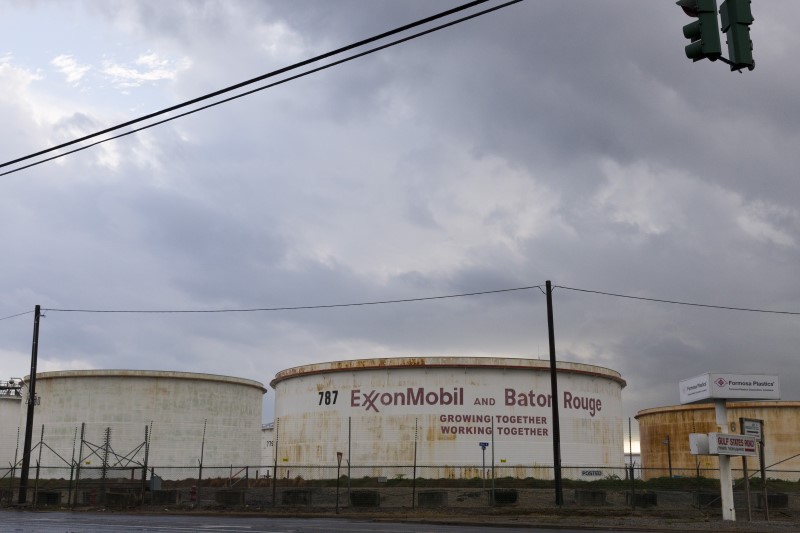By Ahmad Ghaddar and Libby George
LONDON (Reuters) - Gasoline stocks building on both sides of the Atlantic could undercut a sustained recovery in oil prices, as crude's 30 percent rise in the last month is partly based on hopes that drivers will gobble up most global inventories of the fuel.
Strong margins on gasoline have helped European refiners such as BP (LON:BP), Shell (LON:RDSa) and Total weather an 18-month slide in oil prices and they expect gasoline demand, mostly in the United States and China, to boost profits this year too.
But gasoline's profitability could come in well under expectations if demand fails to keep up with rising supply.
Oil this week hit a 2016 high above $40 a barrel, lifted in part by the prospect of refineries sucking up crude to feed summer driving demand for gasoline and trimming a mismatch of 1.5-2.0 million barrels per day between supply and demand.
Like diesel last winter, excess gasoline is pooling in onshore tanks as well as on ships anchored off refining hubs and dawdling along slow-steaming routes around Africa - traders are
sitting on the fuel to cash in on higher future prices.
The gasoline contango, in which prices for delivery in one month are at a premium to those for prompt sale, reached $90 a tonne, around three times the level a year ago. "Even if some of the currently stored barrels move to East of Suez markets, the fact is that there is a lot of inventory being built up that will cap the upside to prices over the next few months," Energy Aspects warned in a note last month.
Gasoline stocks in Europe's Amsterdam-Rotterdam-Antwerp hub hit a record in February of 1.33 million tonnes, up 60 percent year on year, according to consultancy PJK International.
And U.S. gasoline stocks are still 4.4 percent above last year’s level, according to PVM Oil.
THE LONG WAY AROUND
Onshore tanks do not reflect the extent of the stock build.
Around 500,000 tonnes of oil products are being stored on tankers around Europe and the Mediterranean, much of it summer-grade gasoline and blending components.
That amount is equal to a quarter of total imports of both products in December into the United States.
There are also at least three tankers, each with 80,000 to 90,000-tonne cargoes of gasoline-blending components, taking the long route to Asia around the tip of Africa, rather than cutting through the Suez Canal, according to traders and Reuters ship-tracking data.
These include the Riverside, STI Orchard and Captain Paris. Thanks to the contango, every day their journeys last makes their cargoes more valuable when they land.
It's not just in Europe where gasoline stocks are building off the radar. On the U.S. Gulf Coast, La Boheme and Navig8 Honor are storing gasoline, and trader enquiries for floating storage are picking up.
The rationale is the anticipation of strong demand from China, India and the United States, where car sales are rising in what are already three of the world's largest auto markets, to soak up this excess gasoline.
"Those cargoes are building for a reason – the world is going to need them," one trader said.
The level of support fuel consumption lends to refinery profits, and crude oil prices, depends on how much more gasoline needs to be made in addition to what's already waiting.

“We still believe that the supply response to the unequivocal price signals the market has sent over the last four months — to produce and store summer-grade material — has led to a buildup in storage that will be released in the middle of April once the switch to summer gasoline occurs,” Energy Aspects said.